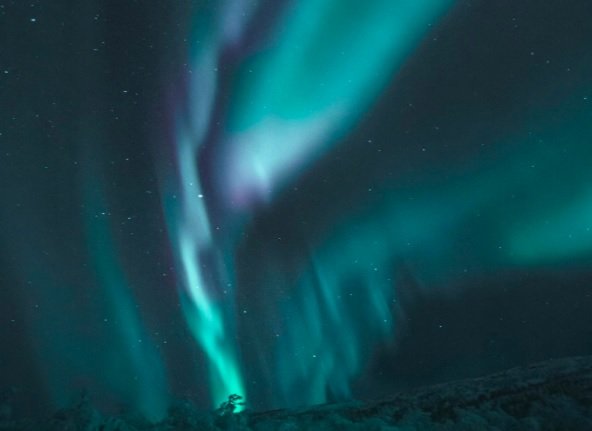The Northern Lights, or Aurora Borealis, are one of the most spectacular natural displays on Earth. Millions of travelers dream of standing under the shimmering sky, watching colors ripple like living brushstrokes across the night. Yet beyond the beauty and the photos, the Aurora carries unique mysteries, science, and cultural significance that make it more than just a travel experience.
The Mystery of the Aurora’s Sound
Most guides tell you what the Northern Lights look like, but very few mention what they might sound like. In remote Arctic locations, some people claim to hear faint crackling or whispering noises when the Aurora is especially strong. For decades, scientists debated whether this was real or an illusion. Recent research in Finland suggests that electrical discharges in the atmosphere can indeed create faint sounds, audible only in complete silence. Imagine standing in a frozen landscape, watching the sky glow green and purple, and hearing it too — it is a sensory experience unlike any other.
Science Behind the Colors
While green is the most common Aurora color, the full spectrum reveals Earth’s natural chemistry at work.
- Green: oxygen at 60–150 miles altitude.
- Red: rare, oxygen at over 150 miles.
- Purple and Violet: nitrogen molecules excited at lower altitudes.
Knowing what each color represents gives the experience a deeper dimension. Instead of just looking at a spectacle, you are watching the atmosphere itself breathe with energy.
Myths and Legends of the Lights
For centuries, cultures around the world created stories to explain the Northern Lights:
- The Sámi of Scandinavia believed they were the souls of the departed.
- Inuit legends described them as spirits playing a game with a walrus skull.
- In medieval Europe, they were often seen as omens of war or famine.
These myths remind us that the Aurora is not only a scientific event but also a cultural mirror. The same sky inspired awe, fear, and reverence across human history.
Where Beyond the Arctic?
Most travelers think of Norway, Iceland, or Finland when they plan a Northern Lights trip. Yet the Aurora is not exclusive to the Arctic Circle.
- Scotland’s Shetland Islands experience Auroras called the “Mirrie Dancers.”
- Minnesota and Maine in the U.S. occasionally enjoy brilliant displays.
- New Zealand and Tasmania offer the Aurora Australis, the Southern Lights, which mirror the spectacle of the north.
For adventurous travelers, these unusual locations provide the chance to witness the lights in places few consider.
Planning Your Journey
To increase the chances of seeing the Aurora:
- Travel during the dark months, September to March.
- Stay for several nights, since the lights are never guaranteed.
- Avoid city lights and head into rural landscapes.
- Use local knowledge. Guides know the quiet valleys and fjords where the sky opens up.
When preparing my own itinerary, I found this resource helpful in identifying less crowded viewing spots that went beyond the usual tourist trails. If you are looking for organized Northern lights tours and packages, you can explore this option which makes planning easier while still offering authentic experiences.
Final Say
The Northern Lights are more than a checklist item. They are science and mystery, myth and wonder, all woven into one natural phenomenon. Whether you hear their faint whispers, learn their legends, or see them from a place you never expected, the Aurora reminds us that the Earth itself is alive with secrets. Standing beneath them is not just travel, it is connection to the vastness of the universe.



